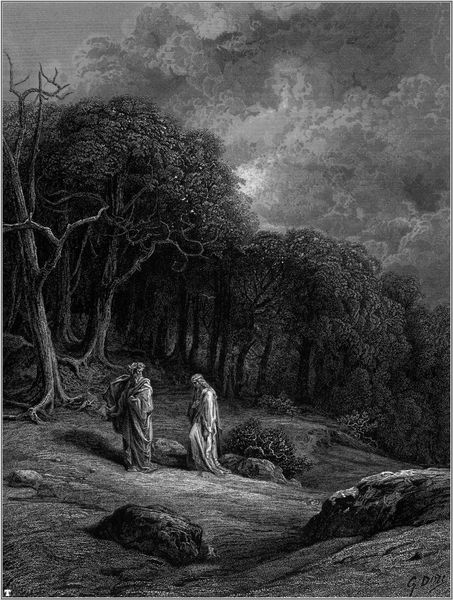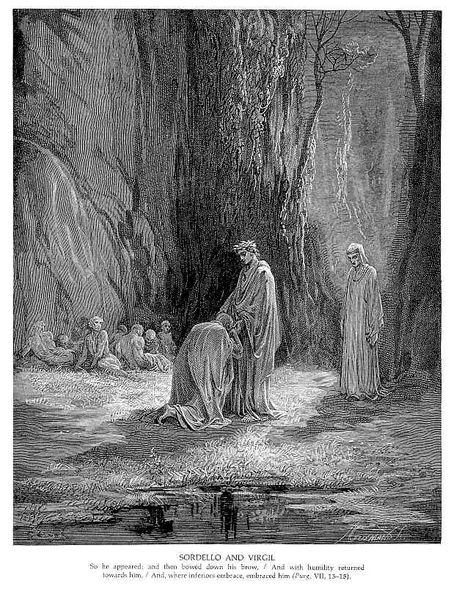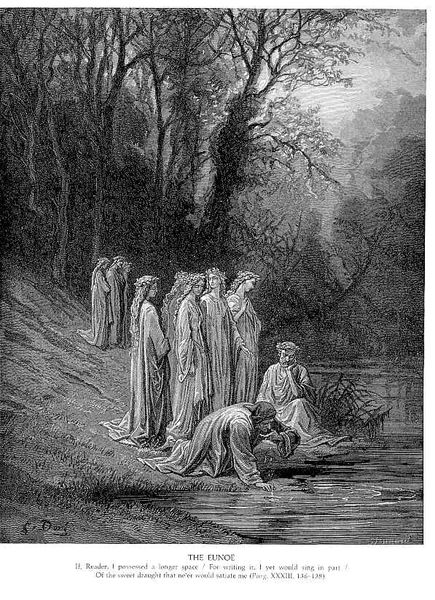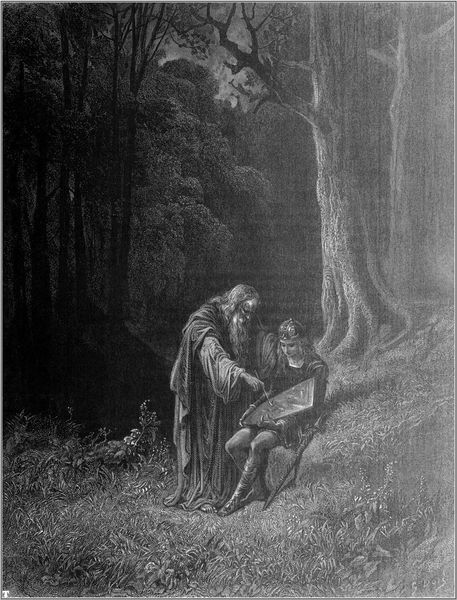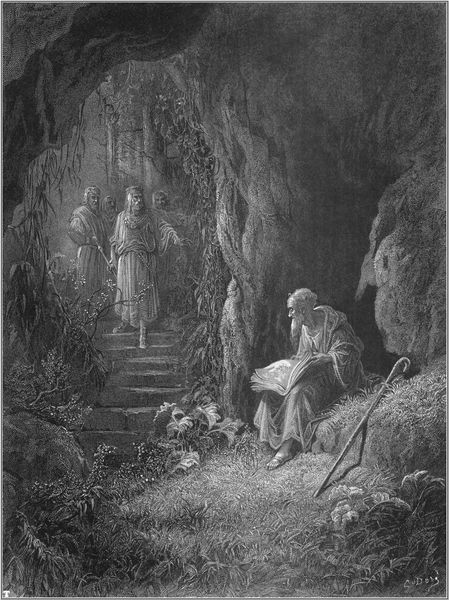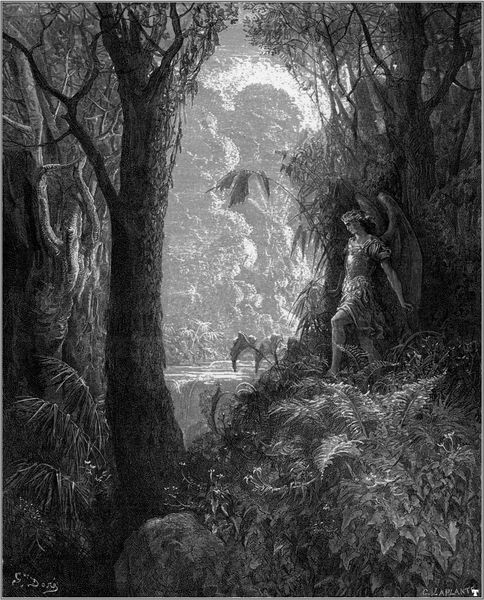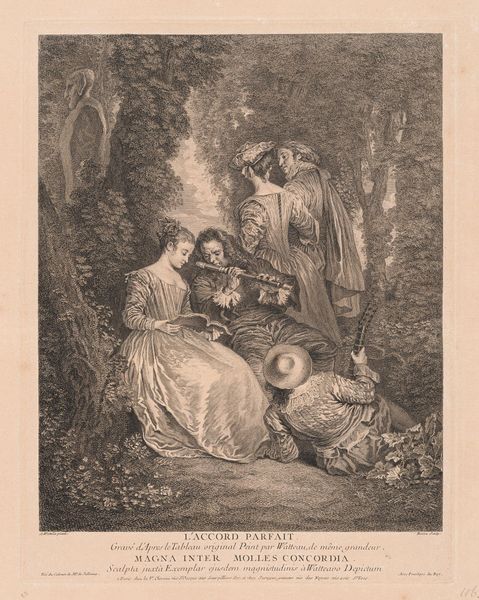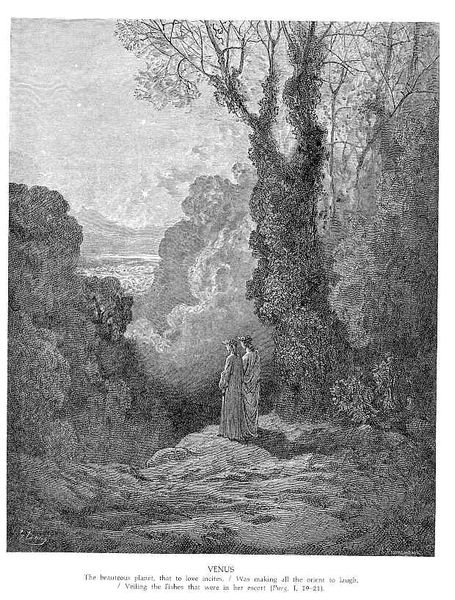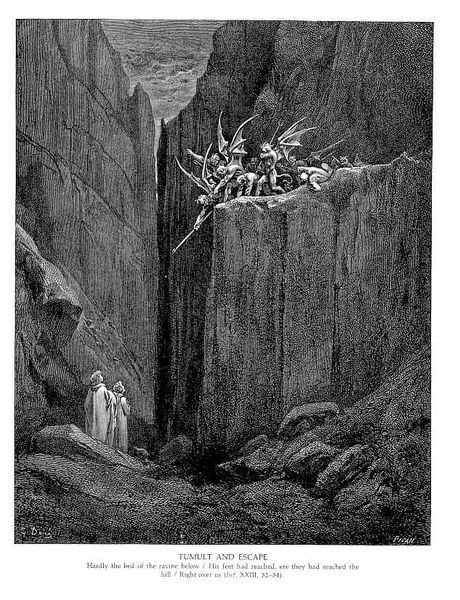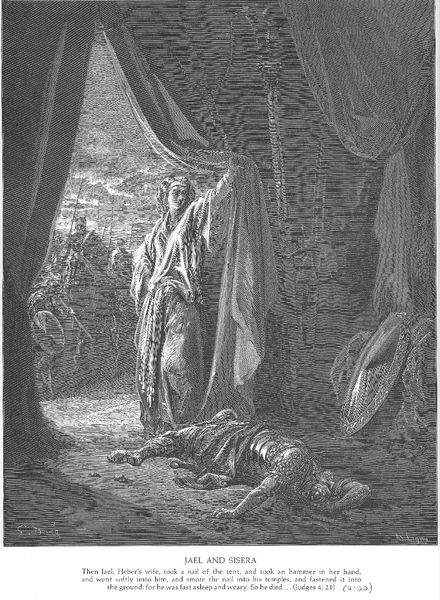
drawing, photography, engraving
#
tree
#
drawing
#
medieval
#
landscape
#
figuration
#
photography
#
tree
#
forest
#
romanticism
#
line
#
history-painting
#
engraving
Copyright: Public domain
Editor: We are looking at an engraving entitled "Pia," by Gustave Dore. I don’t see a date on it, but its fine lines and shadowy figures definitely set a pensive, somewhat melancholy mood. What do you see in this piece? Curator: I see a meticulous work of reproductive labor. The engraving is itself a commodity, made possible by the systems of production and distribution that defined the 19th century. Look closely at the detail. Dore didn't just create the image; teams of engravers translated his drawings into reproducible form, extending his artistic labor through their skilled hands. How does that change your perspective? Editor: I didn’t consider it that way. Knowing the image went through many hands and processes to be realized...does it make the image itself less or more powerful, knowing it wasn't created by just one person? Curator: Neither, but perhaps more telling of the period and culture that created it. Engraving was not just a craft, but a vital component of the printing industry, a mechanism to proliferate imagery for mass consumption. Romanticism in its original painted form, which you identified in style, became affordable. The question for me then turns to accessibility, the relationship between viewer and image, consumption... and how all these systems are sustained. What does Dore gain when his original art can be enjoyed by many? Editor: So, beyond the visual, you see it as a record of social and economic dynamics in the art world. Thank you, that really helps. Curator: And you helped me reconsider its romantic expression through the lens of accessibility. Thanks.
Comments
No comments
Be the first to comment and join the conversation on the ultimate creative platform.
